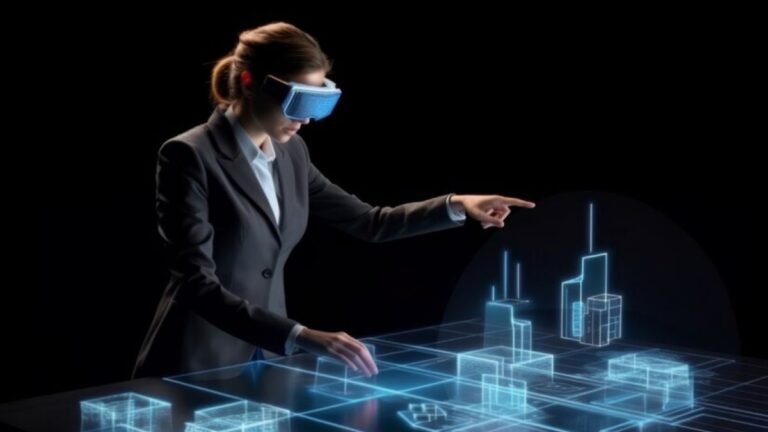The construction industry has experienced a dynamic transformation in recent years, spurred by technological advancements and innovative methods to enhance efficiency, sustainability, and utility within building projects. These innovations play a critical role in addressing contemporary building challenges, such as environmental impact and resource efficiency, paving the way for structures that are more resilient, aesthetically pleasing, and comfortable.
Staying updated with current construction trends provides valuable insight into the industry’s growing capabilities and future direction. This article dives into some of the most impactful innovations shaping modern building practices today. From incorporating sustainable materials that lessen ecological footprints to integrating innovative technologies that make buildings more intelligent, these advancements represent a new standard in construction. This forward momentum also exemplifies the construction sector’s adaptive nature as it rises to meet both current and future demands.
Table of Contents
- Sustainable Building Methods
- Intelligent Buildings of the Future
- Prefabrication and Modular Construction
- 3D Printing in Construction
- Adaptive Reuse vs. New Builds
- The Role of Artificial Intelligence
- Conclusion: Embracing Change in Construction
Sustainable Building Methods
As global awareness about climate change intensifies, adopting sustainable building methods has become a central focus in modern construction strategies. These methods are designed to minimize environmental impacts by utilizing eco-friendly materials and practices. Forward-thinking companies like Snyder Construction are at the forefront of this evolution, employing state-of-the-art techniques and materials that redefine traditional construction paradigms. For instance, green roofs, which provide insulation and reduce stormwater runoff, and solar panels, which generate renewable energy, are proven solutions that increase building efficacy while promoting sustainability. According to the U.S. Green Building Council, incorporating such sustainable technologies enhances energy efficiency and significantly diminishes carbon emissions, aligning with global sustainability goals.
Intelligent Buildings of the Future
The era of smart buildings is accelerating as technological advancements allow for the seamless inclusion of intelligent systems that enhance building operations. Smart buildings integrate various technologies, including sensors, Internet of Things (IoT) devices, and automation systems, which effortlessly manage aspects such as lighting, heating, and security. These features substantially improve costs and provide comfort and protection. As these technologies evolve, they promise a future where buildings autonomously respond to human needs, significantly altering how people interact with their environments daily.
Prefabrication and Modular Construction
Implementing prefabrication and modular construction techniques has become increasingly prevalent, offering solutions that cater to the growing demand for rapid, cost-effective, and quality-focused building approaches. Prefabrication involves producing building components in specialized factories, which are transported and assembled on-site. This method significantly reduces construction timelines and offers improved control over material waste and environmental impact. Modular construction expands on this by crafting whole segments of buildings that can be effortlessly integrated into the final structure, offering unprecedented speed and efficiency in urban development projects. These innovative methods transform urban environments and meet the rising demand for new constructions in rapidly growing cities.
3D Printing in Construction
The advent of 3D printing technology in construction marks a trailblazing era of design flexibility and material efficiency. This cutting-edge technology produces intricate structures and custom components with remarkable precision and speed. Through 3D printing, entire homes can be constructed layer by layer using specialized materials that reduce waste and construction costs. The potential applications of 3D printing in construction are vast, ranging from rapid prototyping to the creation of affordable housing solutions. The Architectural Digest illustrates several cases where 3D printing has significantly impacted the architectural and construction sectors, highlighting its role in innovative designs and practical solutions.
Adaptive Reuse vs. New Builds
Due to mounting environmental concerns and economic pressures, the adaptive reuse strategy has emerged as a valuable alternative to new builds. This approach repurposes existing structures for new functions, conserving materials, energy, and historical integrity. Adaptive reuse balances preserving cultural heritage and accommodating contemporary requirements, offering economic and ecological benefits. While new constructions symbolize technological progress and modernization, adaptive reuse presents an opportunity to innovate within the framework of existing urban landscapes. Decision-makers must weigh these benefits, alongside technical and statutory challenges, when choosing between developing new structures or breathing new life into the old.
The Role of Artificial Intelligence
Artificial Intelligence (AI) rapidly transforms construction management processes, from initial design stages to ongoing resource allocation and project execution. AI-driven solutions enhance planning accuracy, predictive maintenance, real-time building progress, and performance monitoring. By employing AI technologies, construction companies can optimize workflows, reduce risk factors, and implement superior safety measures. With ongoing advancements in AI, its influence over the construction industry is expected to expand, introducing automation that enhances accuracy and provides innovative solutions for complex challenges in modern architecture and construction.
Conclusion: Embracing Change in Construction
As the construction industry stands at the threshold of profound transformation, embracing innovative techniques and technologies becomes imperative. By adopting sustainable building practices, intelligent technologies, prefabrication, and modular construction, the industry transforms structures and profoundly influences their operational dynamics. As these advancements evolve, they promise a future marked by enhanced efficiency, sustainability, and responsiveness to human needs. Construction keeps pace with broader technological shifts and societal goals, driving industry leaders to explore and implement advances that pave the way for a sustainable and prosperous built environment for future generations.

